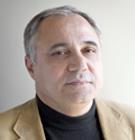
George Altankov
Institute for Bioengineering of Catalonia, Spain
Title: Mesenchymal Stem Cells Behaviour in Nano fibrous Environment
Biography
Biography: George Altankov
Abstract
Mimicking the complex intricacies of the extracellular matrix (ECM) including three dimensional configurations were traditionally used for producing living tissues from stem cells. Electrospinning is a technique capable of fabricating nanofibers (NFs) with dimensions similar to those of the natural ECM. An advantage of electro spun NFs is that they can be further designed for organization and cell binding properties which turn them within the most promising scaffold for regenerative Nanomedicine. Here we report on the use of a novel hybrid, fibrinogen/polylactic acid (FBG/PLA) nanofibers to control the overall behaviour and differentiation potential of human adipose derived mesenchymal stem cells (ADMSCs). We were particularly interested on the dorsal and ventral cell response to nanofibers organization (random vs. aligned). We found that upon ventral contact with random nanofibers the cells developed a stellate-like morphology with multiple projections where the well-pronounced focal adhesion complexes suggest a successful cellular interaction. Time-lapse analysis however showed significantly lowered cell movements resulting in relatively short distance that they traverse in multiple directions. Conversely, an elongated cell shape with extended actin cytoskeleton and significantly increased cell mobility were typically observed when cells adhering on aligned NFs. To further follow the dorsal cell response (in third dimension) artificial wounds were created on confluent cell layers and covered with either random or aligned NFs. Time-lapse analysis showed significantly faster wound coverage (within 12 h) upon contact of cells with aligned nanofibers vs. almost absent directional migration on random samples. However, quantitative reverse transcription-polymerase chain reaction analysis for Collagen 2, Collagen 10 and SOX9 genes expression showed favourable chondrogenic response of human ADMSCs cultured on random nanofibers (50 days in complete chondrogenic medium) compared to aligned ones indicating that temporary immobilisation of stem cell might promote their differentiation.
